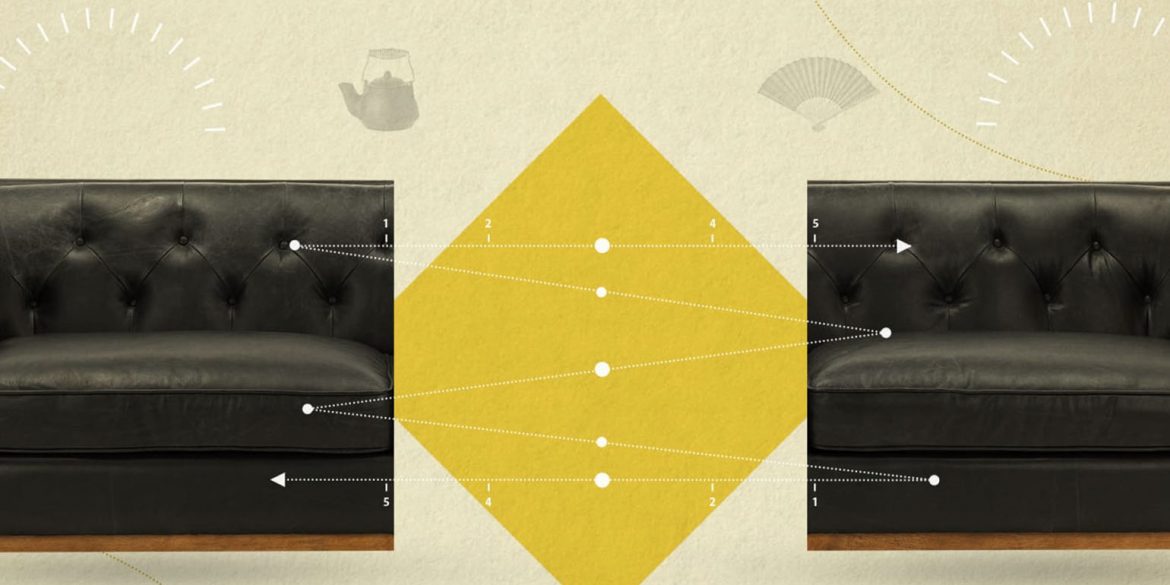Speculating on post-coronavirus life is a raging contagion that infects the worker-from-home. Prior susceptibility is needed. It attacks the mind, causing fevered contemplation of the design of things in a post-corona world. It’s harmless: once you’ve read this, you can wash your hands and move on.
Caveat: how the pandemic will play out is unknown. A long fade with no clear end-of-crisis marker will likely tilt us towards change, with new normals. Or will we see an elastic springing back to life-as-before, with supercompensation for hardships suffered, and a dusting off of any lessons that were being learned? History suggests the first, at least in the medium term and this column is premised on it. But you never cross the same pandemic twice.
A design column must take note of the many excellent, thoughtful responses by the design and creative professions: ingenious citizen grade masks, 3D printed medical ones, paper gloves, inexpensive ventilators, and hands-free versions of everyday objects, great campaigns to promote safe behaviours.

Their life will end with the crisis, but design exists permanently within other human architectures —psychological, social, economic, political, cultural, technological. It is in these terms that we will aim to picture the world that will shape design, with its new expectations and mindshifts. Some of these forces act from near, like static electricity, and some from far, like the moon’s gravity that raises tides. We organise them into three layers of change.
Their life will end with the crisis, but design exists permanently within other human architectures —psychological, social, economic, political, cultural, technological.
The first layer, call it layer 1, has more or less unambiguously observable features. Many of them re-emphasise pre-crisis features. For example, the lockdown could prove the tipping point for the mainstreaming of remote work. New kinds of employee relationships will result. Conversely, at our offices, we could use more digital tools to sync and work. More Zoom or Skype meetings in the same workspace may not be so outlandish.
Perhaps we’ll realise how badly we did meetings and exactly which employee’s presence we really cared about. We already accept and often prefer human-free transactions, in place of relationships. This should accelerate, in two ways. One, socially desirable service relationships— like a favourite shop(keeper)—may be valued more. Unavoidably human services like physical therapy or elder care may gain by mopping up the labour made redundant by the ever-greater virtualization and codification of repetitive tasks by IT, like booking tickets, banking or security solutions without human guards.
Layer 2 changes are political, broad, large but slow. They are matters of governance but also of sentiment. Again, they deepen existing grooves. Commentators point to a further weakening of the international system at the hands of populism. Security will be, even more, the prime duty of governments which in turn may sneak in more troublesome laws. Governments may need less coercion or subterfuge in doing so: many people will acquiesce in the gathering of personal data while prosumer citizens will pressure their peers to conform. At the extreme of this scenario is biosurveillance, warns historian Yuval Noah Harari.
Here is the (tragically?) hopeful scenario. Perhaps the authoritarian mood will coexist with its opposite. An internationally coordinated response is mobilised against threats whose harms are hard to isolate. The realisation of connectedness and a mood of fragility lasts. The limited power of even the most competent governments has been laid bare.
Contagious disease is one such. The environment is another, and over the next decade, more concord and less competition may become politically acceptable. The horrors of the last two wars triggered institutions of cooperative multilateralism, which are losing the few teeth they had, because the most powerful countries sulk. Can the virus grow them back?
If that happens, products that conserve resources may get the strongest push they’ve seen. It’s too late for a shutout of other countries, but supply chains will be evaluated for security and continuity. Products with simple, and local supply chains will be favoured.
The horrors of the last two wars triggered institutions of cooperative multilateralism, which are losing the few teeth they had, because the most powerful countries sulk. can the virus grow them back?
Layer 3 changes are psychological, but at the societal scale. They are the slowest acting, least observable and the most arguable. Describing them involves large dollops of interpretation. They form a background canvas, against which societal anxieties and yearnings become visible and myths are born. Brands that ride these myths and address these anxieties can thrive.

First, citizens and thus consumers will be drawn to security and simplicity. Products that are foolproof, local and basic in their appeal will prosper. The home will be a theme; products and stories that seem to draw firm lines around it, cherish it, will appeal. Self-sufficiency will be encouraged as more and more young employees live in cities that they weren’t born in.
Citizens and thus consumers will be drawn to security and simplicity. products that are foolproof, local and basic in their appeal will prosper.
Next, it’s fertile ground for a myth of authenticity, rooted in traditional, preferably local wisdom, seen as an antidote against the exotic, the foreign and the excesses of modernity. This anxiety can be mobilised by the story that citizens (portrayed as ‘us’) are victims of an exotically sourced germ, transmitted by liberal, capitalistic mechanisms.
The myth of ancient genius has existed in many versions, straddling the 20th century, across cultures. Brands like Patanjali are examples. Simple supply chains and greater localism are compatible with these ideas, even if as imagery rather than fact.
Technology will thrive, though, to enable access to sources of wisdom and information, or what social marketers call influencers. In India, the yearning to be an international power will not conflict with the urge to update and interpret the genius of ancient India for the world. Just spend a morning on Twitter.
A design educator on an influential US design association blog tells students to prepare to be asked, ”What did you do in the pandemic?” and that their answer would be part of their portfolios.. As a perpetual student, I wonder if “I speculated about design in a post corona world” deserves to make the cut. You tell me.
**
 First published in a slightly modified form ‘Not a flash in the pandemic’ in Business Standard on 10 April in Deep Design, a fortnightly column by Itu Chaudhuri, principal at ICD.
First published in a slightly modified form ‘Not a flash in the pandemic’ in Business Standard on 10 April in Deep Design, a fortnightly column by Itu Chaudhuri, principal at ICD.

